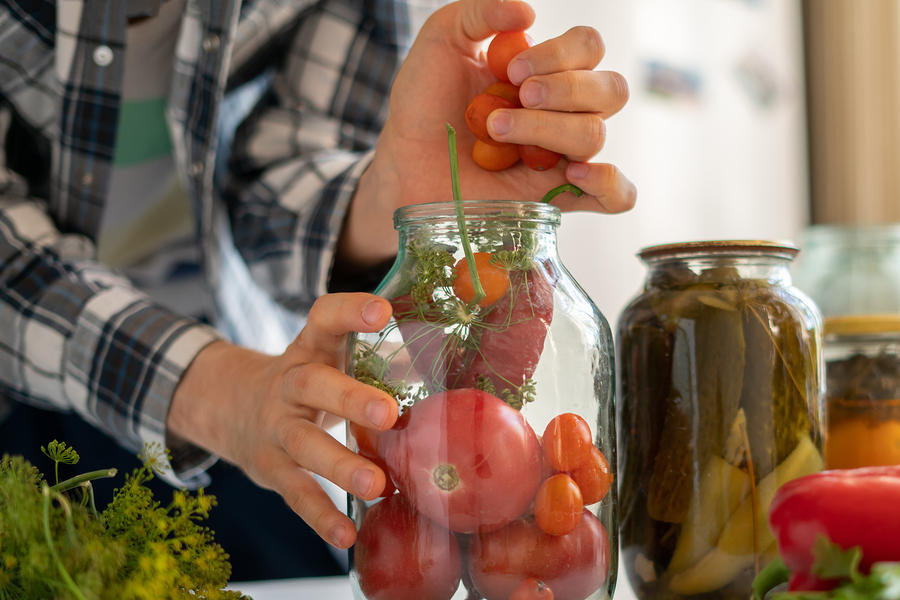Canning is a fun way of providing your family with nutritious food from your garden all year round. The key to optimal flavor and safety of your canned/preserved foods is attention to your processing and storage methods. There are many approaches to canning and preserving food based on the type of food (root vegetable, leafy green, soft skinned fruit, berries, meat) and desired flavor. Below we’ve provided a few essential tips for you to follow and resources for trying different recipes and methods.
Use research-based recipes. If you aren’t sure of the expertise of the person writing a canning recipe, don’t use it. A typo, a missed instruction, can lead to products that contain bacteria, which can result in food poisoning (botulism). Good sources for recipes are:
Let’s Preserve Fact Sheets (Penn State University Extension) free resources organized by food category. https://extension.psu.edu/food-safety-and-quality/home-food-safety/lets-preserve
National Center for Home Food Preservation https://nchfp.uga.edu
Use Mason jars: They withstand the higher temperatures of a pressure canner.
Use two-piece lids: A new flat disk and a screw band.
Preheat jars: Use the dishwasher or place into simmering water prior to filling them. Do not heat in the oven.
Use proper headspacing: 1/4 inch for juices, jams and jellies, and relishes; 1/2 inch for fruits, tomatoes, and pickles; 1 to 1 1/2 inches for meats and vegetables. Too much headspace results in a lower vacuum and a weak seal. Too little headspace may force food under the lid, breaking the seal.
Remove air bubbles with a plastic utensil.
Only tighten lids finger-tip tight.
Use a jar lifter: Important when placing jars into the canner, as well as when removing them. Try not to tilt jars.
When processing, follow the procedures for the method in use: boiling water bath, atmospheric steam canning, or pressure canning procedures.* Adjust process time or pressure for altitudes that are 1,001 feet or more above sea level. After processing, set jars at least two inches apart to cool on a wooden cutting board or towel-lined surface. Do not retighten bands and do not turn jars upside down.
*Procedures for different methods can be found at: Let’s Preserve! Basics of Home Canning https://extension.psu.edu/lets-preserve-basics-of-home-canning
With summer picnics around the corner, how about fresh-preserved sauerkraut for your next outing: https://extension.psu.edu/lets-preserve-sauerkraut

